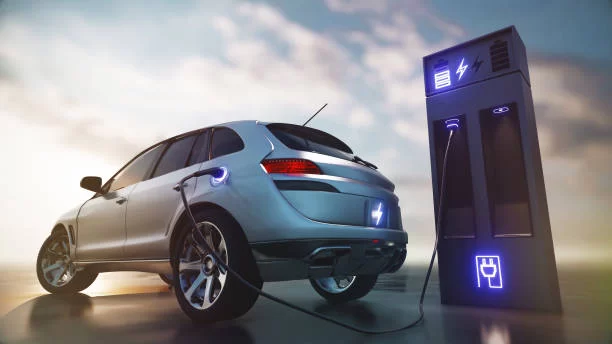Exploring Hybrid Power Cars: The Future of Sustainable Transportation
In the rapidly evolving landscape of automotive technology, hybrid power cars stand out as a beacon of innovation and sustainability. As global concerns about climate change and fossil fuel dependency grow, hybrid power cars offer a compelling solution that combines the best of both electric and traditional gasoline-powered vehicles. This article delves into the definition, advantages, key technologies, challenges, and future prospects of hybrid vehicle highlighting their pivotal role in shaping the future of transportation.

1. Definition and Essence of Hybrid Power Cars
Hybrid vehicle, often simply referred to as hybrid cars, are vehicles that use more than one form of onboard energy to achieve propulsion. Typically, this involves a combination of an internal combustion engine (ICE) and an electric motor. The hybrid system allows the car to switch between the two power sources or use them simultaneously, optimizing fuel efficiency and reducing emissions.
Hybrid vehicle come in various configurations, including:
- Series Hybrid:The ICE generates electricity to power the electric motor, which drives the wheels.
Parallel Hybrid: Both the ICE and the electric motor can directly drive the vehicle’s wheels, either separately or together.
Series-Parallel Hybrid: Combines features of both series and parallel systems, allowing more flexibility in power management.
2. Advantages of Hybrid Power Cars
Fuel Efficiency and Reduced Emissions One of the primary benefits of hybrid vehicles their enhanced fuel efficiency compared to conventional gasoline-powered vehicles. By utilizing electric power for low-speed driving and supplementing with the ICE when needed, hybrids can significantly reduce fuel consumption and greenhouse gas emissions.
Regenerative Braking Hybrid cars often feature regenerative braking systems that capture and convert kinetic energy into electrical energy during braking. This energy is stored in the vehicle’s battery and used to power the electric motor, further improving overall efficiency.
Versatility and Range Unlike fully electric vehicles (EVs), hybrid cars do not rely solely on battery power. This dual-power setup extends the vehicle’s range and eliminates the range anxiety associated with EVs. Drivers can enjoy the environmental benefits of electric driving without compromising on the convenience of a traditional gasoline engine for longer trips.
Cost Savings While hybrid vehicle typically have a higher upfront cost compared to conventional vehicles, the long-term savings on fuel and maintenance can offset this initial investment. Additionally, many governments offer incentives such as tax credits and rebates for purchasing hybrid vehicles, making them more financially accessible.
3. Key Technologies in Hybrid Power Cars
Battery Technology The battery is a critical component of hybrid vehicles. Modern hybrids use advanced lithium-ion batteries, which offer higher energy density, longer lifespan, and faster charging times compared to older nickel-metal hydride (NiMH) batteries. Research and development in battery technology continue to drive improvements in efficiency, capacity, and cost.
Electric Motors and Power Electronics Electric motors in hybrid vehicles are designed to deliver high torque at low speeds, providing smooth and efficient acceleration. Power electronics manage the flow of electricity between the battery, electric motor, and ICE, ensuring optimal performance and energy use.
Energy Management Systems Sophisticated energy management systems (EMS) play a crucial role in hybrid vehicles, overseeing the interaction between the ICE and electric motor. The EMS determines the most efficient power source to use at any given moment, taking into account driving conditions, battery charge level, and driver input.

4. Challenges and Solutions for Hybrid Power Cars
Battery Cost and Lifespan Although battery technology has advanced significantly, the cost and lifespan of batteries remain challenges. Manufacturers are investing in research to develop more affordable and durable batteries, exploring alternatives such as solid-state batteries, which promise higher energy density and safety.
Weight and Space Constraints The addition of an electric motor and battery pack increases the weight and reduces the available space in hybrid vehicles. Engineers are working on lightweight materials and more compact battery designs to address these issues without compromising performance or safety.
Consumer Awareness and Acceptance Despite the benefits, some consumers remain hesitant to adopt hybrid vehicles due to concerns about reliability, maintenance, and resale value. Public education campaigns, coupled with positive ownership experiences, can help dispel myths and build confidence in hybrid technology.
5. Future Prospects of Hybrid Power Cars
Advancements in Autonomous Driving The integration of autonomous driving technologies with hybrid vehicles is set to revolutionize transportation. Autonomous hybrid vehicles can optimize energy use by adjusting driving patterns based on traffic conditions and route planning, further enhancing efficiency and reducing emissions.
Enhanced Connectivity Future hybrid vehicles will likely feature advanced connectivity options, enabling seamless communication with other vehicles and infrastructure. This connectivity will facilitate real-time data exchange for improved traffic management, energy distribution, and predictive maintenance.
Increased Market Penetration As technology continues to evolve and economies of scale are realized, hybrid vehicles are expected to become more affordable and widely available. Increased market penetration will drive further advancements in infrastructure, such as expanded charging networks and service centers.
Contribution to Sustainable Mobility hybrid vehicles represent a vital step towards sustainable mobility, bridging the gap between traditional ICE vehicles and fully electric vehicles. By reducing reliance on fossil fuels and lowering emissions, hybrids contribute to cleaner air, reduced environmental impact, and enhanced energy security.
Conclusion
Hybrid vehicles are at the forefront of automotive innovation, offering a practical and sustainable solution to the challenges of modern transportation. By combining the strengths of electric and gasoline power, hybrid vehicles deliver exceptional fuel efficiency, reduced emissions, and enhanced driving versatility. As technology advances and consumer acceptance grows, hybrid vehicles are poised to play a pivotal role in the future of sustainable mobility, paving the way for a cleaner, greener, and more efficient transportation system.

